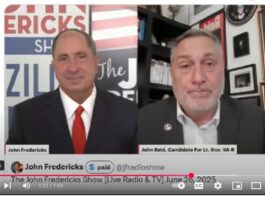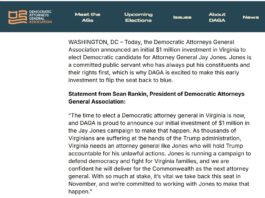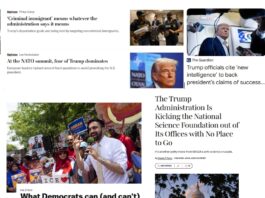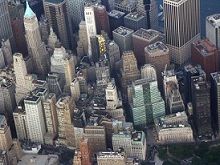 For three decades, the struggle to “free” the markets met with accelerating success. Regulations forged from the lessons of 1920s’ excesses were discarded one after another. Simultaneously, innovation in finance provided new ways to leverage risk. Obama recognized peril in the economy, but no one perceived the imminent danger.
For three decades, the struggle to “free” the markets met with accelerating success. Regulations forged from the lessons of 1920s’ excesses were discarded one after another. Simultaneously, innovation in finance provided new ways to leverage risk. Obama recognized peril in the economy, but no one perceived the imminent danger.
“We’ve got eight years of disastrous economic policy. That’s what we’re going to change when I’m President of the United States.” – candidate Barack Obama
Obama realized very early in the campaign that the economy was getting worse and decided to run on that issue: ‘My opponent doesn’t see it and I can fix it.’ He had traveled to Wall Street to push for a change in its ways.
The Cooper Union speech had been Obama’s message that we have to rein in Wall Street; resume more aggressive regulation. He was talking about regulation before anyone was talking about regulation, before the writing was on the wall. Austan Goolsbee remembers that the reaction was not great, “but to his credit, it did not keep him from laying it out.”
“He was talking about the idea of making sure that the ethics of Wall Street was pure and that we were doing the business that we should be doing.” – Robert Wolf, Chairman UBS Americas
The third segment of the Frontline series, Money, Power, and Wall Street begins at the end of the 2008 campaign. The economy was melting. The Bush administration was leaving. The inauguration was 76 days away. This was the most eventful and consequential Presidential transition in American history. In Chicago, President elect Obama watched the economy continue to collapse. Obama was getting a real glimpse of the future: disaster was coming. In those first weeks after the election, the entire economic team he had assembled was stunned by the bad news. They had been advising him for months, warning him. Meanwhile, there was really no one in the departing administration managing it. There was no political will; no one in charge.
Paulsen had already spent $125 billion bailing out Wall Street’s biggest banks. Now, during the transition, he spent another $20 billion to keep Citigroup afloat. But that did not stem the impending collapse.
- Unemployment was nearly 7% and climbing
- The stock market was down more than 6,000 points
- The megabank, Citigroup, was failing
People on the left argued for an economic team that would be tough on Wall Street; that Treasury would have to take Wall Street to the woodhouse. Former Federal Reserve Chairman and regulation advocate Paul Volcker, feared on Wall Street, an outspoken critic of the banks, was the reformers’ guru. Picking him would deliver on campaign promises to reform the banks and get tough on Wall Street. But inside Obama’s transition team there was a more moderate faction, veterans of the Clinton Administration. They favored Tim Geithner, a protégé of Clinton’s Secretary of Treasury Robert Rubin. Geithner’s perspective was Wall Streets’ and that would reassure Wall Street.
“We were all worried about what we were seeing. We knew that the credit system was pretty quickly headed toward something that looked a lot like seizure.” – Jared Bernstein, Obama economic advisor
For Obama, Geithner, a key player during the Bush administration, would be an unusual choice. In a secret meeting just before the election, they had met and formed an immediate bond. Geithner, like Obama, was a no drama kind of guy. Born just two weeks apart, they had both grown up partly abroad, they both had a parent who worked at the Ford Foundation, and they had a similar world view. Obama thought that Geithner could reassure the markets.
Another Clinton insider, Larry Summers would be the Chief Economic advisor.
“(Obama) was told that appointing this team would present a problem. People will see it as reflecting the interests of the banks. Bringing in the same plumber that caused the problem; why do we believe they’re going to be fixing it? At least fixing it in the interest of the American people and not in the interest of the banks?” – Joseph Stiglitz, Economist, Columbia University
But for Obama’s team, it signaled that they intended to hit the ground running. The President’s view was that he had to have some people who could come in and know what they were doing right away, because it was such a dangerous moment.
“Volcker was the main force for a historic change that has brought inflation rates down for 30 years now, and interest rates have been declining for 30 years.” – Robert Schiller, Economist, Yale University
By now, the financial crisis that started on Wall Street was going global. It was a contagion that operated almost around the globe. It spread from institution to institution and then overseas. China had gone from being a high growth country to almost a no growth country “in the flash of an eye.”
“At the end of the conversation, there are basically no bright spots, and I say to the then President elect, ‘Well that had to have been the worst economic briefing a new President had in almost a century.’ And the President says, ‘That’s not even my worst briefing this week.'” – Austan Goolsbee, Obama economic advisor
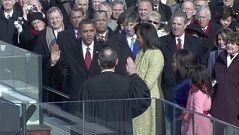 Inauguration came and the problem was theirs.
Inauguration came and the problem was theirs.
“Its like you are moving into a new house and the roof’s on fire and the basement is flooded, there’s gas in the kitchen, there’s a dog in the backyard. The big question is: “How do you make this house livable?” – Austan Goolsbee
Treasury’s goal was to save the financial system. They had to determine how to stop it from going over a cliff. The first problem was how to provide a functioning banking system. Despite the billions of dollars the Bush administration had spent, it hadn’t been enough and the Obama administration was expected to do something immediately. Without an opportunity to get its balance, Treasury was told to present a plan. The President set high expectations prior to its unveiling by saying there was a clear and specific plan. But the plan was not complete and there was not full agreement between Geithner and Summers on the wording. But Secretary Geithner’s time was up. He was not ready for prime time while the world’s financial markets anxiously waited.
“When you go to the website for Treasury and you try to figure out who holds what position and it says ‘vacant, vacant, vacant, vacant, vacant’…They’re still learning which keys go to which locks and how to get around the offices. And they’re being asked to provide the plan that will save the world.” – Charles Duhigg, The New York Times
The plan Geithner presented centered on what he called a ‘stress test.’ Under the program, the government would inspect banks and provide new capital support for those that were in the most trouble. This was designed to build confidence in the banks. But it was not well received. As he spoke, the markets responded by dropping significantly. Expectations had gotten out of control. In office for only three weeks, there were calls for his replacement.
Geithner was convinced this plan is the way to proceed and took his case to the President. His real goal was to create confidence in the sector. Critics did not believe that the stress tests would be enough, but the President stood with Geithner despite tremendous pressure to change course.
Meanwhile, popular sentiment against the banks and corporations grew more and more vocal. Protests erupted across the nation. The anger was not constrained to the streets. Congress responded to the anger by calling the heads of the largest banks to the Hill. At the White House, the political team was concerned that the anger might turn towards the President, They wanted to make an example of at least one of the CEOs. This included David Axelrod, Gibbs, and Summers. Summers thought there needed to be a change in management at least one bank, sending a signal that poor performance would lead to consequences. But Tim Geithner warned the President against what he called “Old Testament Justice.” He was concerned that if the government would move in and tamper with the banks, it would drive off private investors. His first rule was to do no harm and his team was afraid many of the ideas would do just that. To a great extent he was guided by intuition and it is unlikely that anyone who had not had his experience would have held so solidly or could have had as much influence on the President.
 Larry Summers was opposed Geithner’s viewpoint. Summers wanted to be Treasury Secretary. He believed that Wall Street was fundamentally broken and aggressive reform was necessary. Summers wanted to take on and break up at least one of the “Too Big to Fail” banks. In the crisis, the banks were so large and so intertwined, the government was compelled to bail them out because their failure could bring down the entire economy. In that situation, the taxpayers could not allow them to fail. Summers believed that with some of these banks nearing collapse, this was the time to do something about it. Summers wanted to teach them one of the basic lessons of capitalism: if you gamble and lose, you get shut down. He found an ally in Christina Romer, one of the White House Economic Advisors.
Larry Summers was opposed Geithner’s viewpoint. Summers wanted to be Treasury Secretary. He believed that Wall Street was fundamentally broken and aggressive reform was necessary. Summers wanted to take on and break up at least one of the “Too Big to Fail” banks. In the crisis, the banks were so large and so intertwined, the government was compelled to bail them out because their failure could bring down the entire economy. In that situation, the taxpayers could not allow them to fail. Summers believed that with some of these banks nearing collapse, this was the time to do something about it. Summers wanted to teach them one of the basic lessons of capitalism: if you gamble and lose, you get shut down. He found an ally in Christina Romer, one of the White House Economic Advisors.
“Larry Summers and I were both on the side of ‘we need a more definitive clean-up of the financial system.’ And the question was if somebody, you know, really wasn’t solvent, do you need the government to put in capital, realize the losses, clean it up, and then put it back into private hands?” – Christina Romer, White House Economic Advisor 2009 – 2010
It all came to a head on March 15. They came together for what has been called a six hour murder board, during which the President, aided by Summers, grilled Geithner. There was concern that the stress tests were a confidence game that was not hard to manipulate. Summers called them ‘watchful waiting’ and not a real test. Geithner insisted that the plan laid out by Treasury had the best chance of success with the least downside risk. Obama listened and kept his own counsel.
Two weeks later, the nation’s top bankers were summoned to the White House. The bankers feared that they would be forced to accept dramatic reforms; a ban against “Too Big to Fail,” limits on executive compensation, a requirement to refinance mortgages for underwater homeowners. But to their surprise, as the meeting drew on, it became clear that the President was in no mood for confrontation. Geithner had prevailed.
“I think the President sees himself as a pragmatist and I do too. Let’s get through this. Let’s be pragmatic. Let’s not shoot for the moon and miss. Let’s accomplish as much as we can but let’s do it with the certainty that we know we can produce by taking this a little more cautiously.” – former Senator Tom Daschle (D-SD)
The two faces of Obama: publicly he wanted to tell you these were the fat cat bankers; privately, he wanted to get them on board. Not everyone on the team agreed with letting them off, allowing over $180 billion in bailout money without conditions. And, not known at the time was that the banks had, for more than year beginning in the Bush administration, been drawing on a reservoir of cash from the Federal Reserve in order to keep their daily operations from freezing up. The details of these loans only became public after Bloomberg News took the case to the United States Supreme Court.
“On the peak day of 2008, December 8 2008, the banks had taken loans of 1.2 trillion dollars. That’s one day. And out of the 1.2 trillion dollars, not necessarily on the same day, Morgan Stanley alone took out $107 billion; $107 billion of loans out in a single day. Citigroup, over $99 billion on a single day. Bank of America, $91 billion on a single day. Royal Bank of Scotland, UBS, all the biggest banks in the world, had borrowed way more than we ever thought.” – Bob Ivry, Bloomberg News
In all, the federal Reserve had given out $7.7 trillion in loans and commitment, guarantees to financial institutions around the world.
In time for Geithner’s stress tests, banks were reporting billions in profits. When the results were announced, the nation’s 19 largest banks were fundamentally healthy and they would repay their loans.
But politically, there was a cost. The American people were angry. By August the Tea Party was in the streets demanding accountability. But much of the anger was personally directed at the President. It caught the White House by surprise and on the communications front it caught them flat-footed. Rahm Emanuel had seen it coming for months, telling the President he should act. A year to the day after the fall of Lehman Brothers, the President went to Wall Street to address the anger. He returned to announce that he would push for legislation to reform the banks. The big figures from Wall Street did not show up for the President’s speech.
“Those who attend from Wall Street, you know, they’re checking their watches, you know, they’re talking about their summer vacations. Somehow they have survived this disaster of their own making and it is back to business as usual.” – Ron Suskind, Author Confidence Men
Once they had survived, there was no leverage, nothing the White House could do to get them back to the table. And back in Washington, there would be the choice of either reforming the financial system or reforming health care. Obama was not going to get both of them. The choice was health care and the battle was all consuming. As the health care debate heated up, financial reform was left to Congress. The problem was that by now, the banks had recovered and they could afford to do what was necessary to water down any legislation. Armies of lobbyists descended on Congress.
What you had was a financial system, individual banks that were really rescued by the US government and the Fed then using some of that money to influence the US government to make the rules less strict on them going forward. Key proposals to break up the “Too Big to Fail” banks were kept out of the legislation.
“The problem for Obama is that the thrust for his case to the American public is: it could have been worse. And it is a hard bumper sticker on the back of your car “It Could Have Been Worse,” think of it. That’s not something you run for President on. That’s an abstraction that can’t be proven; that you prevented something that didn’t happen.” Peter Baker, New York Times>
Many worry that the serious problems are still out there; that what we have done is institutionalize “Too Big to Fail.” One crisis sows the seeds of the next crisis.
“The three pieces we really had to get right (“Too Big to Fail,” risky investments, derivatives); it isn’t a matter of opinion, those three things are three things we haven’t really solved. And therefore, until those are solved, we haven’t dealt with the problem.” – Senator Ted Kaufman (D-DE)
In many ways, the financial crisis has never really ended.

